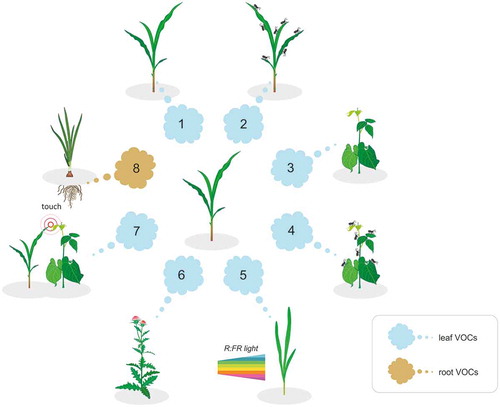Figures & data
Figure 1. Volatiles from neighboring plants can have informative value for a receiver plant about the presence of (1) plants of the same species, (2) herbivore-infested plants of the same species, (3) plants of another species, (4) herbivore-infested plants of another species, (5) plants exposed to low red:far-red light, (6) highly competitive plants (weeds), (7) mechanically stimulated plants, and (8) root VOCs.

Figure 2. Volatile cues in network plant interactions. Exposure to volatile cues from emitter (E0) reveals their physiological status and change volatile emission of receiver 1 (R1) which becomes emitter 1 (E1) reflecting through specific volatiles their own responses to the presence of E0 plants further to receiver 2 (R2).

